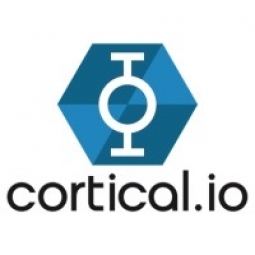公司规模
Large Corporate
国家
- United States
产品
- SemanticPro Classify & Automate
技术栈
- Natural Language Understanding
实施规模
- Pilot projects
影响指标
- Digital Expertise
- Innovation Output
技术
- 分析与建模 - 自然语言处理 (NLP)
适用行业
- 药品
适用功能
- 产品研发
- 质量保证
用例
- 监管合规监控
- 对话机器人
服务
- 数据科学服务
关于客户
客户是一家全球生物制药公司。该公司不直接向消费者销售药物,因此无法监控其药物的使用情况。患者记录受到隐私限制,即使有记录,公司也无法重建针对哪种疾病开出的药物。该公司希望通过筛选社交媒体上的患者评论来收集有关标示外用药的情报。
挑战
这家生物制药公司面临着追踪其药品的说明书外使用情况的挑战。说明书外使用是指以 FDA 未指定的方式开具药品,占所有处方的 10% 到 20%。然而,其确切程度很难衡量,因为制药公司没有直接的反馈机制来追踪其产品用于哪些疾病。该公司无法监控其药品的使用情况,因为患者记录受到隐私限制,不允许公司重建哪种药物用于哪种疾病。该公司决定使用社交媒体,尤其是 Reddit,作为有关药物使用情况的知识来源。
解决方案
该公司向 Cortical.io 寻求帮助,利用其在开发基于自然语言理解 (NLU) 的解决方案方面的专业知识,开发出一种工具,能够克服社交媒体帖子固有的歧义和模糊措辞障碍,并在可供训练的帖子数量有限的情况下正确解释这些帖子。在项目的初始阶段,Cortical.io 基于 SemanticPro Classify & Automate 创建了一个原型,用于识别一组静态 Reddit 帖子中提及的符合和不符合标签的药物使用情况。利用 Cortical.io 基于含义的算法,该应用程序可以自动准确地过滤和分类 Reddit 消息并汇总结果。Cortical.io 使用公开信息为公司指定的每种示例药物训练分类器。
运营影响
数量效益

Case Study missing?
Start adding your own!
Register with your work email and create a new case study profile for your business.
相关案例.

Case Study
Case Study: Pfizer
Pfizer’s high-performance computing software and systems for worldwide research and development support large-scale data analysis, research projects, clinical analytics, and modeling. Pfizer’s computing services are used across the spectrum of research and development efforts, from the deep biological understanding of disease to the design of safe, efficacious therapeutic agents.

Case Study
Fusion Middleware Integration on Cloud for Pharma Major
Customer wanted a real-time, seamless, cloud based integration between the existing on premise and cloud based application using SOA technology on Oracle Fusion Middleware Platform, a Contingent Worker Solution to collect, track, manage and report information for on-boarding, maintenance and off-boarding of contingent workers using a streamlined and Integrated business process, and streamlining of integration to the back-end systems and multiple SaaS applications.

Case Study
Process Control System Support
In many automated production facilities, changes are made to SIMATIC PCS 7 projects on a daily basis, with individual processes often optimised by multiple workers due to shift changes. Documentation is key here, as this keeps workers informed about why a change was made. Furthermore, SIMATIC PCS 7 installations are generally used in locations where documentation is required for audits and certification. The ability to track changes between two software projects is not only an invaluable aid during shift changes, but also when searching for errors or optimising a PCS 7 installation. Every change made to the system is labour-intensive and time-consuming. Moreover, there is also the risk that errors may occur. If a change is saved in the project, then the old version is lost unless a backup copy was created in advance. If no backup was created, it will no longer be possible to return to the previous state if and when programming errors occur. Each backup denotes a version used by the SIMATIC PCS 7 system to operate an installation. To correctly interpret a version, information is required on WHO changed WHAT, WHERE, WHEN and WHY: - Who created the version/who is responsible for the version? - Who released the version? - What was changed in the version i.e. in which block or module of the SIMATIC PCS 7 installation were the changes made? - When was the version created? Is this the latest version or is there a more recent version? - Why were the changes made to the version? If they are part of a regular maintenance cycle, then is the aim to fix an error or to improve production processes? - Is this particular version also the version currently being used in production? The fact that SIMATIC PCS 7 projects use extremely large quantities of data complicates the situation even further, and it can take a long time to load and save information as a result. Without a sustainable strategy for operating a SIMATIC PCS 7 installation, searching for the right software version can become extremely time-consuming and the installation may run inefficiently as a result.

Case Study
ELI LILLY ADOPTS MICROMEDIA’S ALERT NOTIFICATION SYSTEM
Pharmaceutical production is subject to a strict set of enforced rules that must be adhered to and compliance to these standards is critically necessary. Due to the efforts of WIN 911’s strategic partner Micromedia, Lilly was able to adopt an alarm notification infrastructure that integrated smoothly with their existing workflows and emergency hardware and protocols. These raw energy sources enable the industrial process to function: electricity, WIN-911 Software | 4020 South Industrial Drive, Suite 120 | Austin, TX 78744 USA industrial steam, iced water, air mixtures of varying quality. Refrigeration towers, boilers and wastewater are monitored by ALERT. Eli Lilly identified 15000 potential variables, but limitations compelled them to chisel the variable list down to 300. This allowed all major alarms to be covered including pressure, discharge, quantity of waste water discharged,temperature, carbon dioxide content, oxygen & sulphur content, and the water’s pH.









